

TOP > Divine Master Tenrai Hayashima: His Life and Times

- March 3, 1910
- Born as a direct descendant of the Otakasa clan, founders of Kochi Castle
*The House of Otakasa is a branch of the Murakami Genji, the original disseminators of Doin in Japan. The divine master’s adoptive family of Hayashima is in turn the guardian of the ki medicine tradition in Japan.
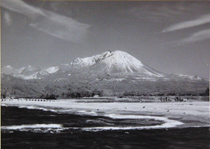 THE DIVINE Master at primary school
THE DIVINE Master at primary school 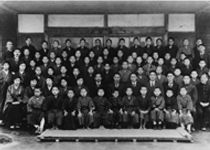
- 1960
- Founded the Shobukan Dojo in Kamakura.
Adapted and modernized a 5,000-year-old Chinese method for breathing and attracting ki through Doin-jutsu and began disseminating his unique method of Doin-jutsu, and Doko-jutsu.
- 1965
- Appointed 13th head of the Lung Men school of Taoism.
Also became chief advisor to the Szu Han T'ien Shih Fu (office of the celestial master advising the Han Dynasty), the highest office of Doin.
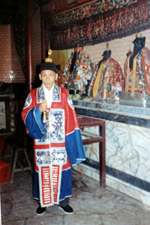
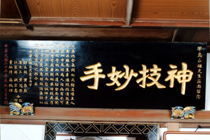
- 1975
- Introduction to Doin-jutsu: People do not die from Disease published in Taiwan
- 1976
- Launches the magazine Sengaku
- 1977
- Japanese Taoist organization renamed ‘Nihon Dokan’ with headquarters relocated
to Iwaki City, Fukushima Prefecture
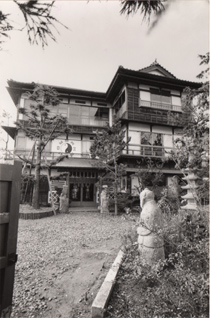 Founding of Nihon Dokan.
Founding of Nihon Dokan.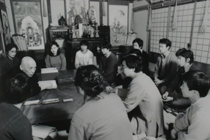 Delivers lecture at old headquarters
Delivers lecture at old headquarters - 1981
- Launches the monthly magazine, Dokan
- 1982
- Divine Master Tenrai Hayashima’s book Doin-jutsu Nyumon (Introduction to Doin-jutsu) is a bestseller.
He appears on the NTV talk show, Look, Look Konnichiwa. Subsequently makes many TV appearances.
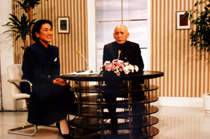 ON TV in 1982
ON TV in 1982 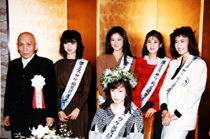 HEALTH Festival Celebrating the Sake Bath in 1984
HEALTH Festival Celebrating the Sake Bath in 1984- 1983
- Delivers a lecture at the Japan Society for Oriental Medicine in 1983.
Lectures nationwide. Demonstrates Doin-jutsu and Doko-jutsu on TV Asahi’s Afternoon Show.
- 1985
- Becomes a regular guest on Fuji Television’s Morning Apple.
- 1986
- Receives the title of Taoist Master from Taiwan’s Szu Han T'ien Shih Fu
- 1987
- Travels to Taiwan to meet fellow Taoists. Receives rapturous welcome everywhere.
Appears on Okusama TV Jockey. Becomes a celebrity on daytime Japanese TV.
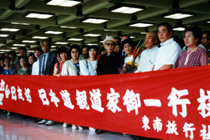 MEETING fellow Taoists in Taiwan in 1987
MEETING fellow Taoists in Taiwan in 1987 - 1990
- Becomes advisor to Chinese magazine on ki, Kiko.
Receives prize for contribution to society and culture from the Association of Promotion of Japanese Culture.
100th edition of the magazine, Dokan、celebrated at the Hotel New Otani in Tokyo.
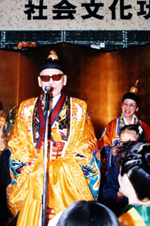
- 1991
- Participates in the Chinese Taoists’ international conference in Wendeng. Receives rapturous welcome, ‘the sage has returned,’ from local residents and TV station when visiting the Kunlun Mountain of Shandong Province, China.’ Monument erected displaying his calligraphy: People do not die from disease. Embarks on tour of China’s Silk Road.
Greeted with the highest form of welcome, the Ceremony of Opening Light at Beijing’s White Cloud Monastery.
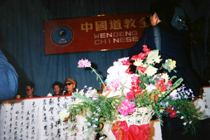 PARTICIPATING in the Chinese Taoist Society’s international conference in Wendeng in 1991
PARTICIPATING in the Chinese Taoist Society’s international conference in Wendeng in 1991 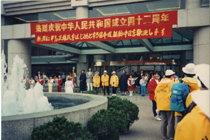 TRAVELLING the Silk Road, 1991
TRAVELLING the Silk Road, 1991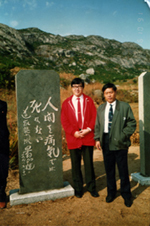 MONUMENT at Mount Kunlun, Shandong Province showing his calligraphy
MONUMENT at Mount Kunlun, Shandong Province showing his calligraphy - 1992
- Holds the 1st Jizo Festival to promote interaction with children Gifts a mikoshi shrine to the children’s festival
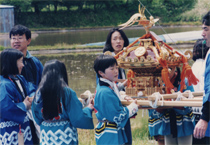 Gifts a mikoshi shrine to the children’s festival
Gifts a mikoshi shrine to the children’s festival- 1993
- The Peruvian paper the Peru Shimpo carries a large article on the divine master.
Calligraphy class
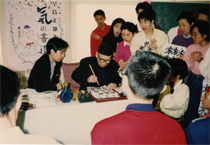 1993 Spring Festival and welcoming party for new Taoists
1993 Spring Festival and welcoming party for new Taoists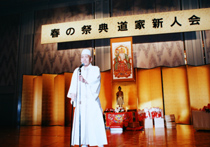 AT the launch of the Japan Gokokuto Party in 1993
AT the launch of the Japan Gokokuto Party in 1993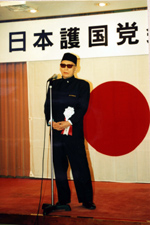 IN 1994 at the start of Taikisha which is the precursor of Nihon Dokan’s musical performance troupe today. Nepalese statue of Buddha presented to Nihon Dokan.
IN 1994 at the start of Taikisha which is the precursor of Nihon Dokan’s musical performance troupe today. Nepalese statue of Buddha presented to Nihon Dokan. - 1995
- Travels to the Yaeyama Islands in Okinawa
- 1995
- Trip to Yaeyama Islands, Okinawa Prefecture. Visits the famous hotsprings of Japan; Cheju Island, South Korea
- 1997
- Creates the musical performance troupe, Nihon Dokan Ongaku Jikkotai.
- 1997-2001
- Grand Master Masao Hayashima’s work is published in English, German and Spanish
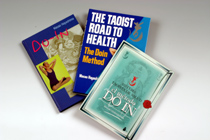 English, German and Spanish editions of Masao Hayashima’s work
English, German and Spanish editions of Masao Hayashima’s work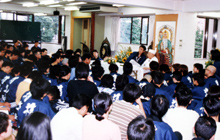 Delivering a special lecture at the Taoist school in Tokyo
Delivering a special lecture at the Taoist school in Tokyo- 1999
- Tenrai Hayashima passes away.
Myozui Hayashima becomes grand master and the 14th head of the Lung Men school of Taoism







